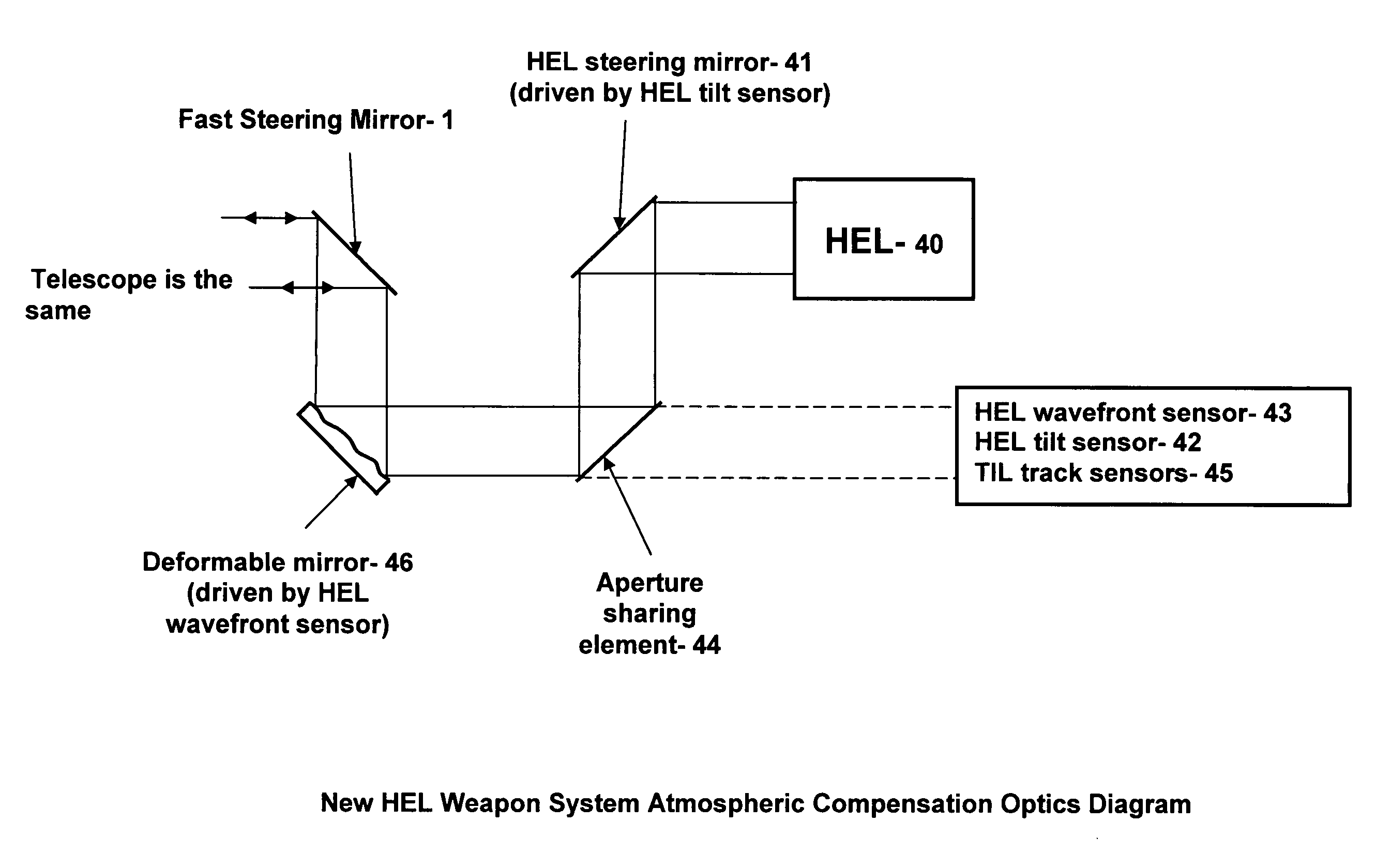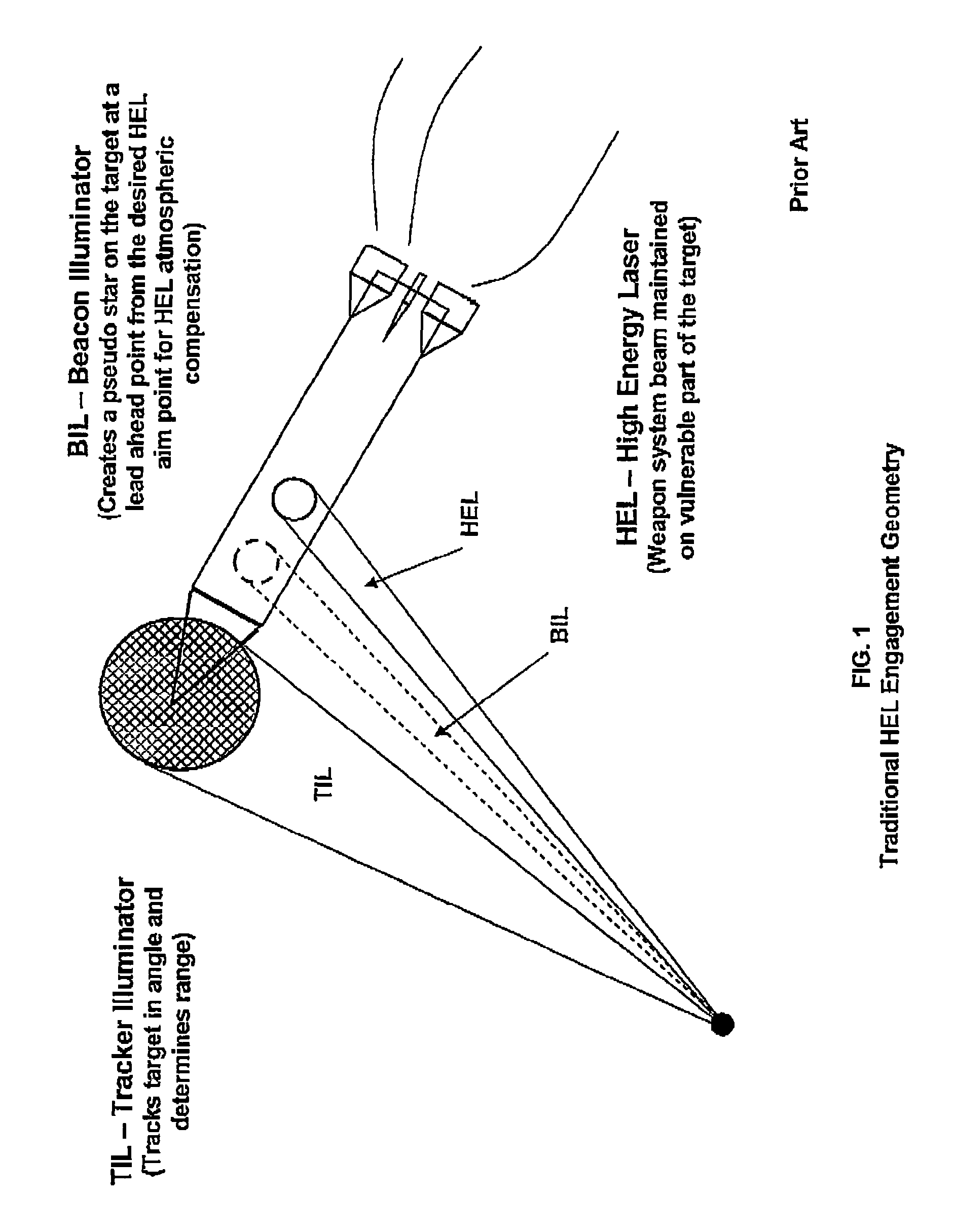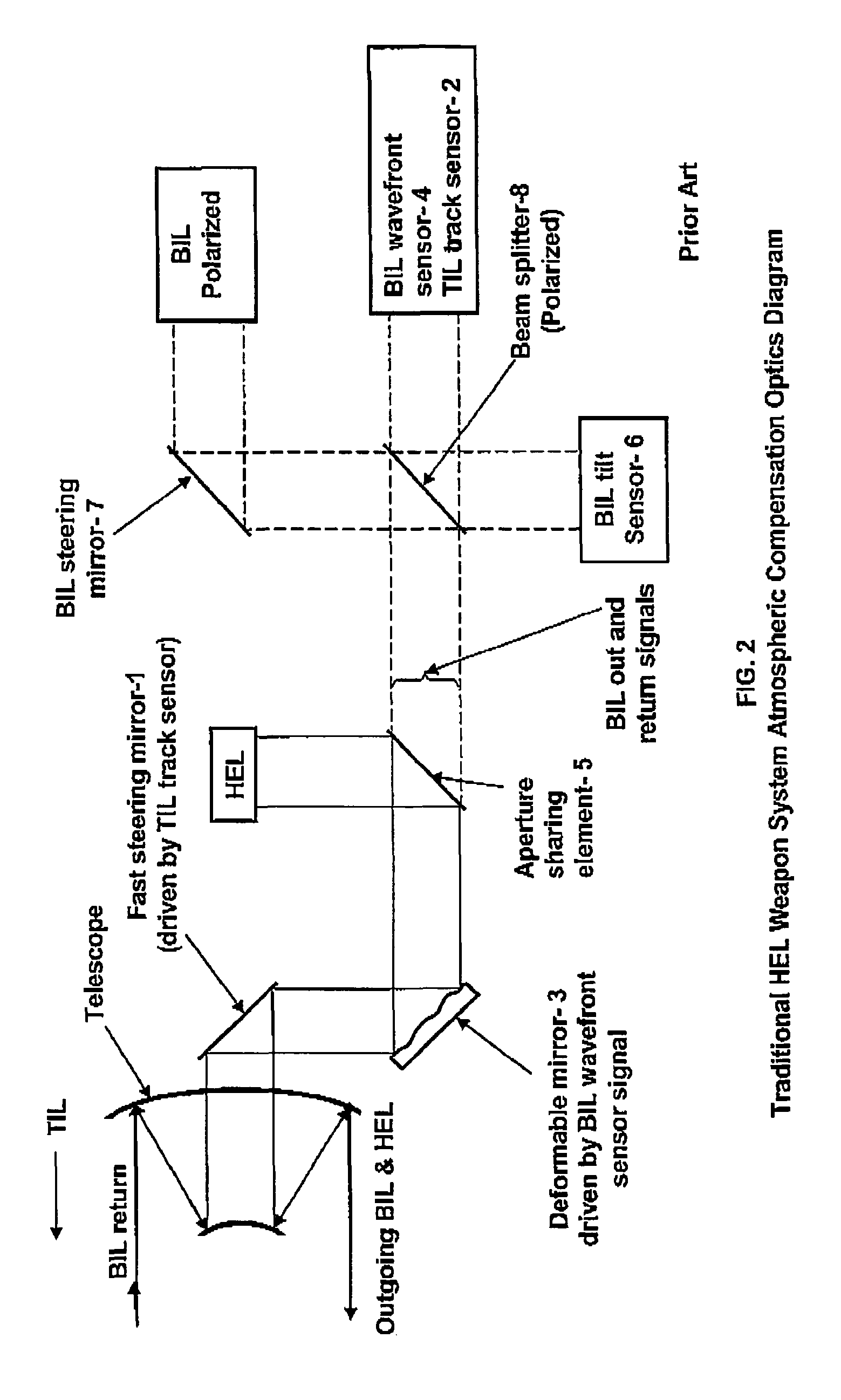High-energy laser atmospheric compensation and aimpoint maintenance
a high-energy laser and atmospheric compensation technology, applied in the direction of laser details, instruments, measurement devices, etc., can solve the problems of beacon illuminator increasing the complexity, power draw, and weight of the overall weapon system, and prohibiting the reference to each other
- Summary
- Abstract
- Description
- Claims
- Application Information
AI Technical Summary
Benefits of technology
Problems solved by technology
Method used
Image
Examples
Embodiment Construction
[0014]The present invention uses the high-energy laser itself to measure the atmospheric disturbances and the location of the laser on the target by turning the high-energy laser off for a very brief time (negative pulse), for example 200 nanoseconds to 20 microseconds, while the wavefront sensor and aim point sensor look at the high-energy laser return. The wavefront sensor is not operated for the first approximate 100 ns of the negative pulse to give the outgoing photons and any backscatter a chance to clear the local optics and very close atmosphere just outside the output telescope. The photons travel at about one foot per nanosecond and, therefore, about 50 feet of beam train is clear of outgoing high-energy laser light in the first 100 ns (round trip of 100 ft). Since the return from the target is very strong due to the high power of the high-energy laser, there are plenty of photons to detect in the short wavefront sensor integration time of 0.100 to 1.9 microseconds or whate...
PUM
 Login to View More
Login to View More Abstract
Description
Claims
Application Information
 Login to View More
Login to View More - R&D
- Intellectual Property
- Life Sciences
- Materials
- Tech Scout
- Unparalleled Data Quality
- Higher Quality Content
- 60% Fewer Hallucinations
Browse by: Latest US Patents, China's latest patents, Technical Efficacy Thesaurus, Application Domain, Technology Topic, Popular Technical Reports.
© 2025 PatSnap. All rights reserved.Legal|Privacy policy|Modern Slavery Act Transparency Statement|Sitemap|About US| Contact US: help@patsnap.com



